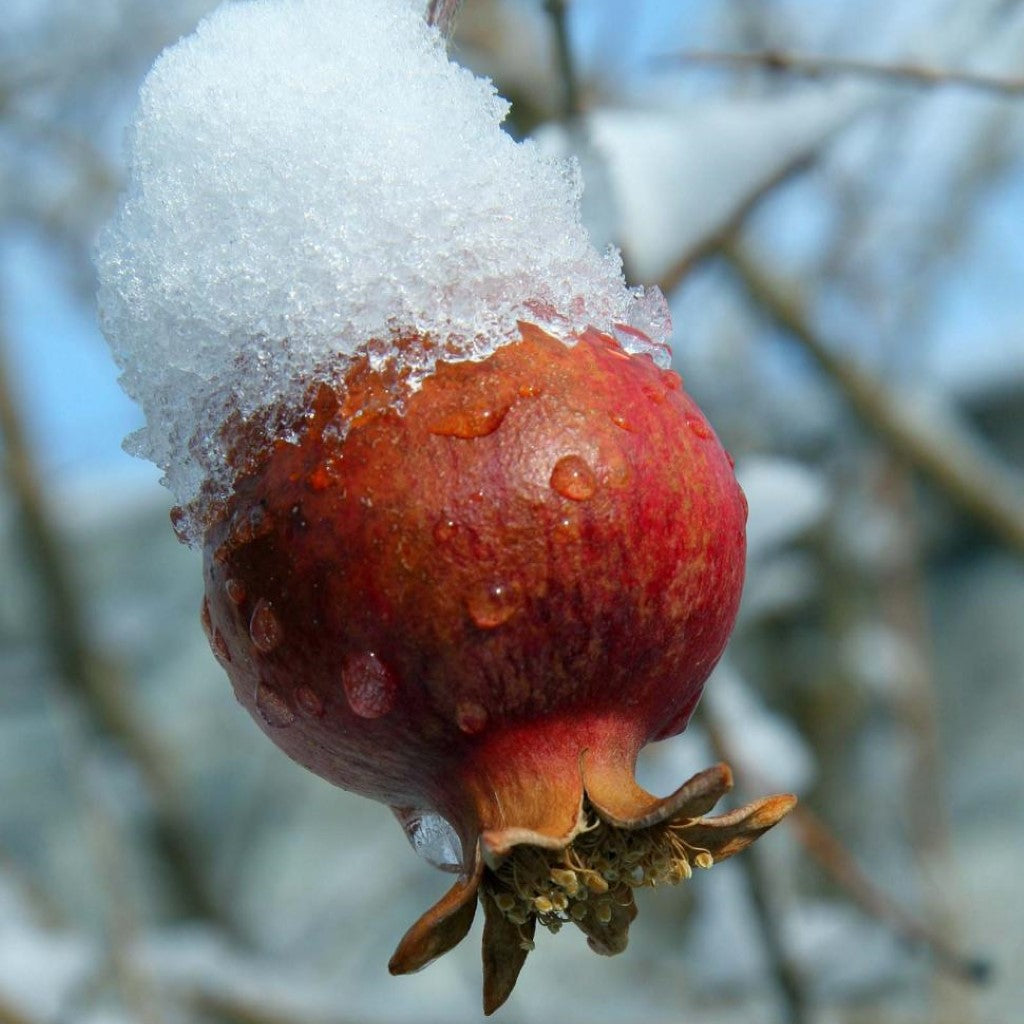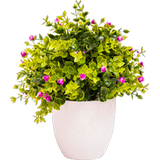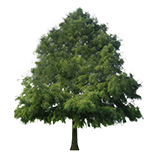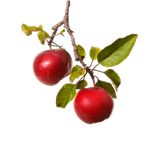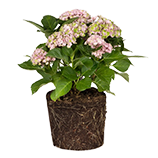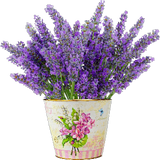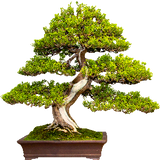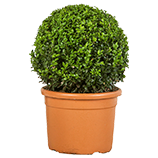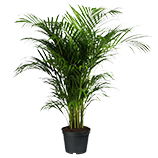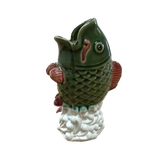
Description
🍀 Russian Pomegranate Tree's Key Characteristics
The Russian pomegranate, also known as Punica granatum 'Russian', is a unique cultivar renowned for its cold-hardiness and prolific fruit production. One of the most notable features of the Russian pomegranate tree is its exceptional cold-hardiness.
Unlike many other pomegranate varieties, which thrive in warm climates, this pomegranate tree can withstand colder temperatures. So, while planting pomegranate trees, you can rest assured that they will grow in regions with harsh winters. To get pomegranate trees for sale, visit Pixies Gardens!
🌳 Origin, Growing Conditions, and Optimal Habitat For Russian Pomegranate
This is a fascinating fruit-bearing tree, renowned for its resilience and prolific fruit production. Originating from the Caucasus region of Russia, this cultivar was specifically bred for its ability to withstand colder climates, unlike many other pomegranate varieties that thrive in warmer regions.
Characterized by its medium-sized stature and dense, bushy growth habit, the cold hardy Russian pomegranate tree typically reaches heights of 10 to 12 feet, making it an ideal choice for smaller gardens or orchards. For more knowledge and to buy the right pomegranate plant for sale, check out additional details here:
|
Parameter |
Details |
|
Family |
Lythraceae |
|
Growth Habit |
Deciduous tree |
|
Height |
Varies by cultivar, typically 10 to 15 Feet (2 to 3 meters) |
|
Lifespan |
20 to 30 years in optimal conditions |
|
Hardiness Zones |
USDA Zones 6 to 11 |
|
Temperature (F) |
Optimal growth in warmer climate and can survive in cold weather |
|
Soil pH Range |
5.5 to 7.5 |
|
Sun Exposure |
Full sun |
|
Watering Needs |
Moderate, drought tolerant in well drained soil and clay soil, regular watering is essential, especially during the first few years after planting |
|
Pruning Requirements |
Annual pruning in early Spring or Fall to remove dead or damaged branches and shape the tree |
|
Flowering Season |
Late spring to early summer |
|
Bloom Color |
Bright orange, red flowers |
|
Variants |
Cold hardy pomegranate, |
|
Fruit Ripening Season |
Late summer to fall |
|
Fruit Color |
Deep red fruit |
|
Fruit Flavor |
Sweet and tangy, with a hint of acidity |
|
Propagation Methods |
Seeds, cuttings, or grafting, in the right growing season |
|
Pests and Diseases |
Relatively pest and disease resistant, but may be susceptible to fungal diseases such as powdery mildew and pests like aphids and scale insects |
|
Harvesting Time |
Late summer to early fall |
✨Care and Maintenance of Cold Hardy Russian Pomegranate Trees
The cold hardy Russian pomegranate tree is relatively low-maintenance, but proper care is essential to ensure healthy growth and abundant fruit production. Here are some essential tips for caring for and maintaining Russian pomegranate trees and an answer to the question: How to Grow a Pomegranate Tree?
Planting: Where do pomegranate trees grow? Well, choose a sunny location with well-draining soil for planting your cold hardy pomegranate tree. Ensure the soil pH is between 6.0 to 7.0 for optimal growth. Dig a hole twice as wide and deep as the root ball and backfill it with a mixture of compost and native soil.
Watering: Russian Pomegranate trees prefer moderate watering, especially during the first few years after planting. Water deeply to encourage deep root growth, and water more frequently during dry periods. However, avoid overwatering, as it can lead to root rot.
Fertilization: Apply a balanced fertilizer, such as 10-10-10, in early spring before bud break. Repeat applications every 4 to 6 weeks during the growing season. Use a fertilizer formulated for fruit trees and avoid excessive nitrogen fertilization to prevent excessive vegetative growth.
Protection from Pests and Diseases: While Russian pomegranate trees are relatively pest and disease-resistant, they may still be susceptible to fungal diseases such as powdery mildew and pests like aphids and scale insects. Monitor your tree regularly for signs of infestation and treat it promptly if necessary.
Harvesting: Russian pomegranate fruits typically ripen from late summer to fall. Harvest the fruits when they are fully ripe, as indicated by their deep red color and slightly soft texture. Use pruning shears to cut the fruits from the tree, leaving a small stem attached.
By following these care and maintenance guidelines, you can ensure your Russian pomegranate tree for sale remains healthy, productive, and a beautiful addition to your garden or orchard for years to come.
(Researching is recommended to enhance Plant Knowledge effectively)
🔎Searching for 'Where Does Pomegranate Grow' or 'Pomegranate Trees for Sale?'
Looking to buy a Russian pomegranate tree to add a touch of exotic beauty to your garden? Look no further! Pixies Gardens offers high-quality, cold-hardy Russian pomegranate trees for sale, perfect for enthusiasts and gardeners alike. Our trees are carefully cultivated to ensure optimal health, so you can enjoy delicious pomegranates for years to come.
At Pixies Gardens, we pride ourselves on providing top-notch customer service and expert advice to help you select the perfect tree for your needs. Whether you're a seasoned gardener or just starting, our team is here to assist you every step of the way.
Average USDA Growing Zones

💡 Frequently Asked Questions (FAQs)
How does Russian pomegranate taste?
Russian pomegranates taste sweet with a slight tartness when not fully ripe. Their arils are reddish, and they have bright colors. A cold hardy pomegranate tree produces many beautiful orange flowers during the spring.
Are Russian pomegranates self-pollinating?
Pomegranate trees, including Russian pomegranate trees, are self-pollinating, but pollination from other pomegranate trees increases fruit size and produces more fruit.
How big do cold hardy Russian pomegranate trees get?
Russian pomegranate trees grow to about 15 feet, with an equal spread at maturity. They prefer full sun to produce the best fruit, although they can tolerate a light shade.
How long does it take for a Russian pomegranate to fruit?
Russian pomegranate takes 2 to 3 years to fruit. Initially, they require between 100 and 200 chill hours. A mature pomegranate tree can produce 90–100 lbs. of fruit under optimal conditions.
Do you need two pomegranate trees to produce fruit?
The bees do all the pollination on self-fruitful pomegranate trees. The fruit production on both plants can increase when you plant another pomegranate tree nearby. It isn't necessary to cross-pollinate, but a little doesn't hurt.
Where is the best place to plant a pomegranate tree?
Sunlight is vital to pomegranate trees. To maximize your tree's growth rate, place it in full sunlight. Your tree should be planted in an area with sandy loam soil and good drainage. A good drainage system is also essential for your pomegranate tree to thrive.
Note: The plant is shipped in its pot, firmly secured with several layers of clear tape, thereby avoiding any shuffling and moving during transit. The plant reaches you with minimal damage very safe and secure. We have been shipping plants like this for several years (plants are sometimes shipped in smaller pots for safety and ease of shipping). Most plants go dormant in Fall and Winter and will lose most of their leaves. Looking dead and dry, is very normal. The plant will flush out in Spring. We cannot ship certain plants and some sizes to California due to restrictions placed by the California Department of Agriculture.


